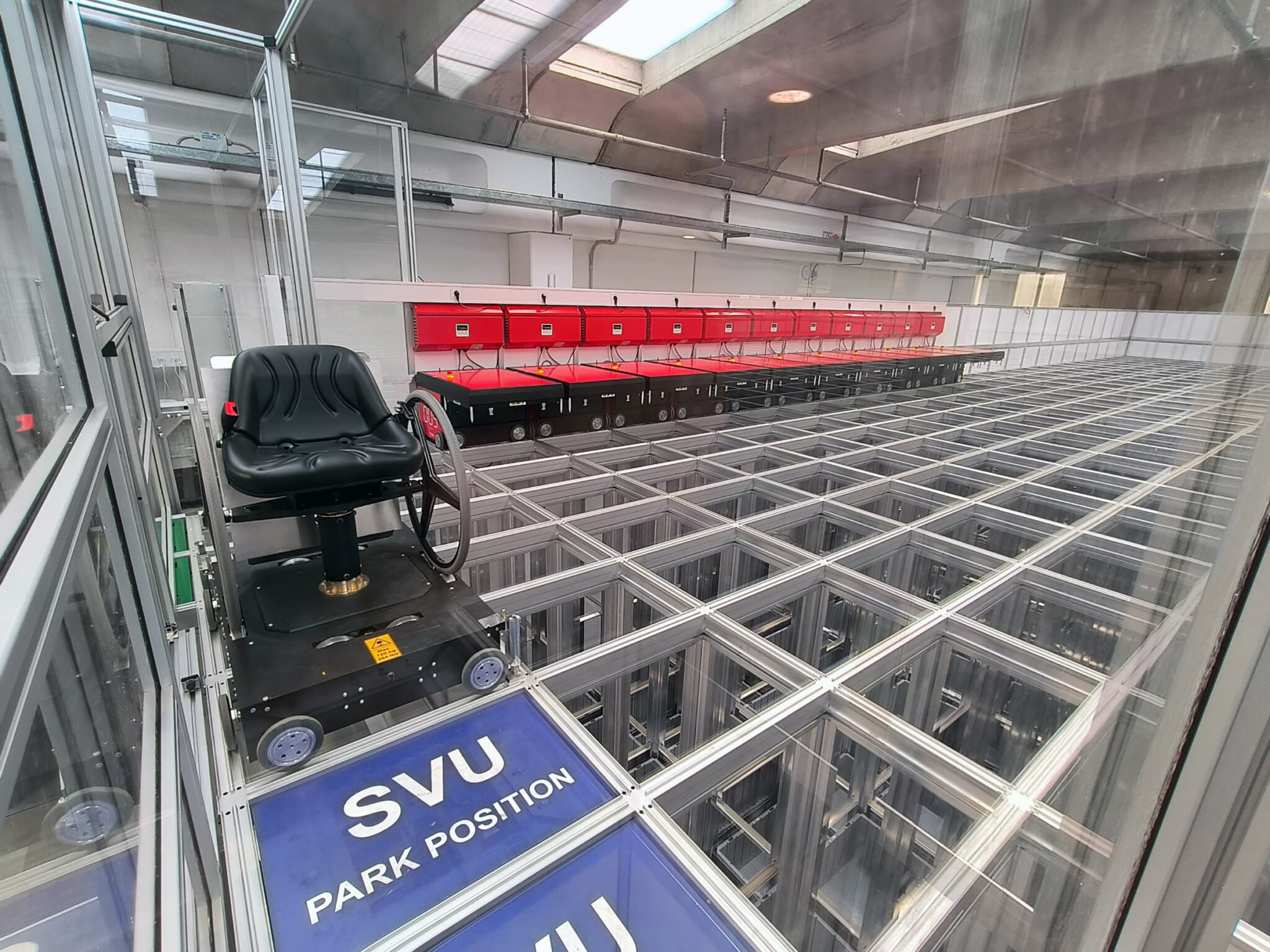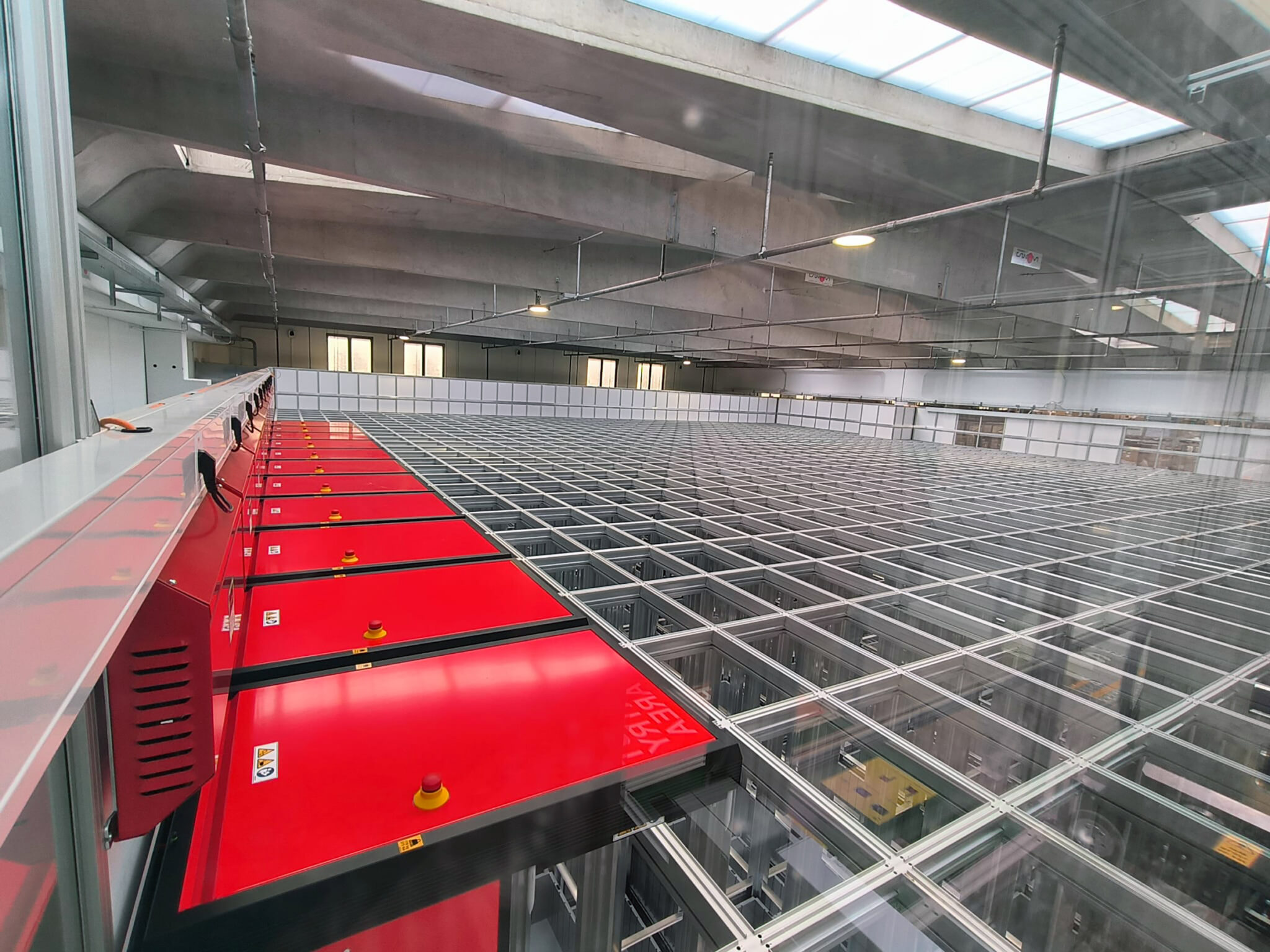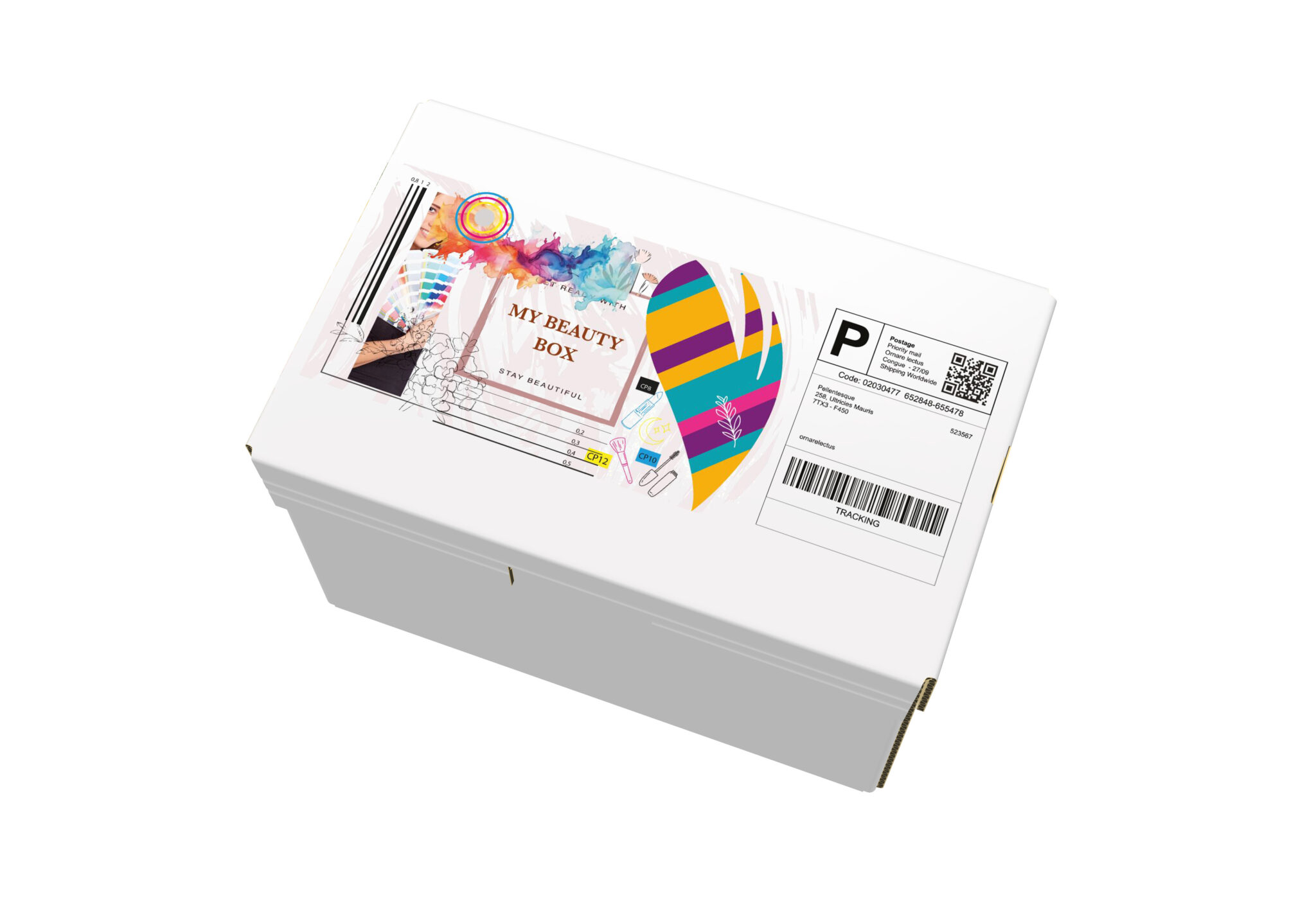When the new distribution centre is up and running, the ramp-up was successful, and the first items are picked onto pallets or roll containers with the help of highly dynamic COM machines, then the ‘Grand Opening’ is celebrated, everyone involved congratulates each other, and there is a festive atmosphere. Automation works and the days of manual warehouse logistics are a thing of the past.
“In principle, we build a highly automated production facility for and with our customers,” explains Johannes Meißner (pictured below, top picture), Technical Managing Director at WITRON, who has been working in various positions at the company for more than three decades. Customers who have a strong background in manual logistics processes are particularly impressed when they visit the first reference customers. “We transform entire work processes, which is why we need a working change management system for the customer in every phase – design, build, and operate – and that we help to develop right from the start.” Meißner and his colleagues from sales and logistics design have already guided numerous new customers through existing facilities realized by WITRON worldwide. “That’s how a project usually starts,” he explains.
Change management begins with detailed analysis
Double-digit efficiency gains thanks to end-to-end automation from receiving to shipping require new processes. The cooperation with suppliers is changing, transport volumes need to be adapted, master data is gaining importance, packaging designs are becoming more important, employees are being given new areas of responsibility and need different qualifications, stores have to be involved, perhaps even the end customer as an e-commerce purchaser. “We do not only supply software, conveyor technology, and machines – we also support the customer in detail as part of the change management, and even take over the service or the complete system operation if so required. We start by analyzing the products, the internal and external material flow, the vertical and horizontal supply chain in detail, creating transparency for the customer and for us. Together, we define new packaging standards, review master data, and provide support in communicating with suppliers who also have to benefit from this process. We help train logistics employees, explain processes, and provide communication support.”
One example of a successful change process with a supplier is the project for a French food retail customer where the Flow Picking Machinery (FPM) has been implemented for the first time in the fresh food sector. It uses OPM technology but works without stock and builds store-friendly pallets just-in-time for customers. A key factor in the system’s efficiency is the structure of the inbound pallets. “In our case, 45 percent were full pallets or single-item layer pallets, which we can depalletize automatically very well. These are added by uniform case pallets, which are pallets with one type of standard carton boxes or totes containing different items that can also be depalletized automatically. This already gives us an automatic depalletizing rate of almost 65 percent without making any major adjustments. But the goal was more than 80 percent,” remembers Meißner. How can this be achieved? Change and communication. The WITRON logistics experts have defined a strategy with the customer to increase the ratio of uniform case pallets in cooperation with the suppliers, and, at the same time, to reorder complete layer units of fast-moving items from the supplier in the future. “That is a win-win outcome for the retailer and the supplier, as it significantly simplifies the supplier’s logistics,“ says Johannes Meißner happily.
The topic of IT is closely linked to the suppliers. “We build intelligent interfaces to their systems and can also quickly connect to the customers’ or their system providers’ systems in order to use our WITRON WMS Suite. At the same time, we have invested a lot in the UX of our systems in recent months. When employees learn the systems more quickly because operation has become simpler or more intuitive, this has positive impact on process stability, efficiency, and transparency in the warehouse.”
Communication and transparency are crucial
Transparency is a good keyword. Another example of successful change communication is an innovative omni-channel logistics center in Switzerland. In recent years, Migros Verteilbetrieb AG (MVB) in Neuendorf has also increasingly relied on automation in the non-food sector. “Everything used to be manual here – spread over five floors. That is hard to imagine today,” says Alexander Schweizer, Head of Engineering and IT, Migros Verteilbetrieb AG. The main building, which houses the near- and non-food area, supplies more than 700 stores and many thousands of home shopping customers from a range of 100,000+ items per year. On a peak day, WITRON’s OPM, AIO, CPS systems pick more than 470,000 cases. And there were initially concerns among the employees. “Yes, there are concerns because the workers’ tasks will change significantly,” explained the department responsible for the change process openly during one of the first visits at the start of the project. “We take these worries seriously, talk to our colleagues, inform them about the progress of the construction site, about new tasks, and further training opportunities.” An employee app keeps staff constantly informed about developments, while large screens at the entrances visualize future tasks. People play a key role in the logistics processes. Those responsible at Migros Verteilbetrieb in Neuendorf quickly recognized this and professionalized the change management. But also the management board was expected to answer questions.


Enabling intensive exchange with reference customers
“It’s not enough to distribute glossy flyers about the new automated logistics centre. The Swiss did this very well throughout the entire project,” explains Meißner. In his view, it also requires a mind shift on the part of both management and employees in the distribution center. That they will no longer work in a manual warehouse in the future but will be an important part of a high-performance production facility. “Both need to be sensitized. And this starts from the very first visits when the customers are in Parkstein. “In addition, as part of reference visits and workshops, we enable our customers to engage in intensive discussions with the logistics and service managers responsible for the systems we have implemented. Even across national borders and continents. Customers also have a responsibility to change, we support them through all project phases, show them the efficiency gains, but if there is a lack of willingness, then the project won’t be a success and we cancel such deals,” explains Meißner, who gets on a plane after the interview to participate in the opening ceremony of the new Coles logistics center in Australia. It is already the second distribution center that Coles has implemented with WITRON as a lifetime partner. Coles also used to work with conventional warehouses.
Three dimensions as the basis for successful change
However, it is not only in Europe and Australia that customers have understood how a successful change process is handled and the opportunities it brings. Karl Högen (pictured above, bottom picture) has been responsible for the North American business as CEO for many years and knows: “Training is very important. We want a commitment to the system. Customers invest a lot of money and rightly so,” emphasizes the CEO. “After more than 100 realized projects with food retailers, we often know this sector “end-to-end” in detail better than our customers. It is therefore also up to WITRON to show customers weak points in change management.” Karl Högen refers to three dimensions:
1. The technology – both the mechanics and the IT – where customers benefit from WITRON’s extensive design, realization, service, and operating experience as a lifetime partner with overall responsibility.
2. The people in the logistics facilities, but also in the stores who need to be informed and trained.
3. The processes related to suppliers, for example, when it comes to packaging and products.
Högen reflects on projects in the USA: “After the project was completed, there were still five aisles with products that could only be picked manually. Following various discussions with the suppliers, these items could also be fully integrated into the automated process.”
Taking along the people in the distribution centres
The people are the decisive factor for Högen. “There is a global lack of skilled workers and new technologies are helping to compensate for this, but we also have to take people along with us. We have to make it easier for them to no longer have to lift and carry between 12 and 16 tons of goods a day in the dry, fresh, and frozen food areas and communicate that change is also necessary.” New working environments are replacing traditional work areas. Manual picking processes take a back seat or are replaced by service, management, and controlling tasks. And WITRON also had to change, Högen supports Meißner’s statements about new user interfaces. “We are trying to reduce complexity, for example, through better user interfaces, but automation is still more demanding than manual systems,” he explains. Only recently, completely new user interfaces were rolled out for a US customer. “We listen carefully to where the weak points are, where we can improve processes so that automation brings efficiency gains and is enjoyable,” Högen laughs. Or as one of his North American customers used to say: “Our highly automated logistics center is a game changer- in terms of store service, transport costs, and leading-edge jobs for employees.”
similar news
Integrator Witron Celebrates North America Milestone








